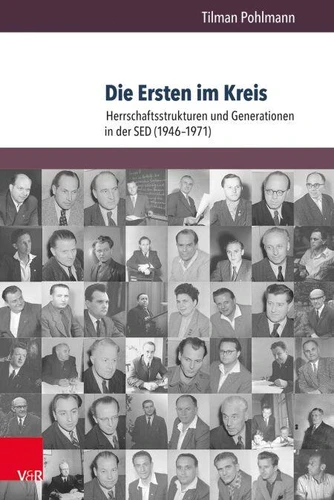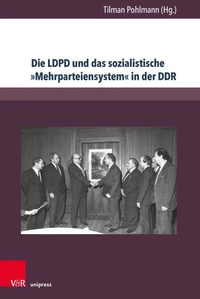Die Ersten im Kreis. Herrschaftsstrukturen und Generationen in der SED (1946–1971)
Par : ,Formats :
Disponible dans votre compte client Decitre ou Furet du Nord dès validation de votre commande. Le format PDF est :
- Compatible avec une lecture sur My Vivlio (smartphone, tablette, ordinateur)
- Compatible avec une lecture sur liseuses Vivlio
- Pour les liseuses autres que Vivlio, vous devez utiliser le logiciel Adobe Digital Edition. Non compatible avec la lecture sur les liseuses Kindle, Remarkable et Sony
 , qui est-ce ?
, qui est-ce ?Notre partenaire de plateforme de lecture numérique où vous retrouverez l'ensemble de vos ebooks gratuitement
Pour en savoir plus sur nos ebooks, consultez notre aide en ligne ici
- Nombre de pages261
- FormatPDF
- ISBN978-3-8470-0660-2
- EAN9783847006602
- Date de parution13/02/2017
- Protection num.pas de protection
- Taille6 Mo
- Infos supplémentairespdf
- ÉditeurV&R Unipress
Résumé
The stability of political order during the Ulbricht era was predominantly based on the skilful way the Socialist Unity Party (SED) linked their ideological work with organisational structures and personnel policies. Ironically, the long lines and break after the epochal caesura of 1945 proved, at the district level, to be stabilising. This thesis is represented by Tilman Pohlmann in his study on the first secretaries of the SED's district head offices.
They personified and organised the state socialist ruling system within the lower ranks of the GDR society and implemented the dictatorial demands of the party leadership into local political practice. For the first time ever, the generational profile and the structural internal order of the SED are now being examined integrally at the district level from an experiential- and institutional-historical perspective.
They personified and organised the state socialist ruling system within the lower ranks of the GDR society and implemented the dictatorial demands of the party leadership into local political practice. For the first time ever, the generational profile and the structural internal order of the SED are now being examined integrally at the district level from an experiential- and institutional-historical perspective.
The stability of political order during the Ulbricht era was predominantly based on the skilful way the Socialist Unity Party (SED) linked their ideological work with organisational structures and personnel policies. Ironically, the long lines and break after the epochal caesura of 1945 proved, at the district level, to be stabilising. This thesis is represented by Tilman Pohlmann in his study on the first secretaries of the SED's district head offices.
They personified and organised the state socialist ruling system within the lower ranks of the GDR society and implemented the dictatorial demands of the party leadership into local political practice. For the first time ever, the generational profile and the structural internal order of the SED are now being examined integrally at the district level from an experiential- and institutional-historical perspective.
They personified and organised the state socialist ruling system within the lower ranks of the GDR society and implemented the dictatorial demands of the party leadership into local political practice. For the first time ever, the generational profile and the structural internal order of the SED are now being examined integrally at the district level from an experiential- and institutional-historical perspective.




